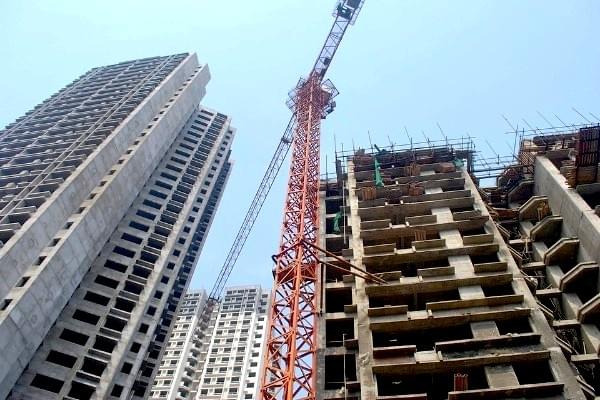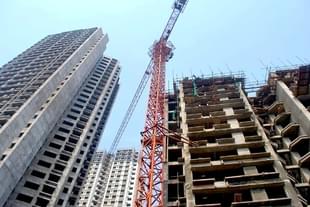Economy
Govt’s Relief Package For Real Estate Addresses Critical Problems, But Revival Of Demand Important To Maximise Impact
Karan Bhasin
Nov 11, 2019, 05:50 PM | Updated 05:50 PM IST
Save & read from anywhere!
Bookmark stories for easy access on any device or the Swarajya app.


The Finance Minister unveiled a Rs 25,000-crore ambitious programme on 6 November to revive India’s real estate sector that will revive pending projects and benefit homebuyers across the country.
Many have termed the programme as India’s version of the Trouble Assets Relief Program which was unveiled by the US Federal Reserve post the collapse of Lehman Brothers.
Under the TARP program, the Fed provided banks with cheap capital for them to lend it further. A case in point is that despite equity infusion, credit offtake didn’t improve in the US banks.
Unfortunately, India’s experience has been the same with fresh equity infusion in Public Sector Banks (PSBs) over the last six years. Despite recapitalisation, the spreads have widened, which should be a cause of concern.
But we will discuss India’s banking sector woes in great detail over subsequent articles. For now, let us focus on the proposed plan for revival of real estate assets.
In many ways, the plan for a special debt-based financing window for stuck projects may appear like a TARP program.
But the intuition behind the programme is to prevent healthy assets in the real estate space from becoming stressed assets.
This is important as fresh vulnerabilities have emerged in cooperative banks and Non-Banking Finance Companies (NBFCs), which suggests that the Non-Performing Assets (NPA) mess is only going to be completely behind us from March 2020 onwards.
Incidentally, a lot of exposure of banks and NBFCs was to real estate assets, either as housing loan products or financing of builders and specific projects.
The financial system is critical in the sense that despite spreading risks over different institutions, collectively, the system ends up with greater systemic risks.
Therefore, when a project in the real estate sector becomes an NPA because the builder lacks funds to complete the same, several NBFCs and cooperative banks which sanctioned loans to homeowners find their assets getting stressed.
Of course, the bank or group of banks financing the project is naturally exposed to these risks.
This means that a shortage of funds equivalent to a very small proportion of the value of the project can result in the entire project becoming an NPA, thereby destroying a lot of value and wealth stored in the asset.
Moreover, a lot of wealth gets stuck in such stalled projects, which limits the growth potential of our economy.
All of this highlights the extent of impact that this programme is going to have on the real estate sector and the Indian economy.
The move is going to revive over 1,600 stalled projects that cover 4.58 lakh units. The move is likely to benefit over 3 lakh families and will free up stuck wealth of around Rs 100,000 crore to Rs 125,000 crore in the economy.
This is going to positively improve the cashflow of several builders and will also have a big multiplier impact on the Indian economy.
The move addresses a critical problem in the Indian real estate space. However, revival of demand for real estate assets is another area where we need to focus.
Yes, builders made mistakes in the past and we have Real Estate Regulation Act (RERA) in place to avoid similar mistakes in the future.
But, the question in front of us today is of strengthening the sector and leveraging it as an engine of growth for the economy.
It is well recognised that employment elasticity is high in the real estate and construction sector and strong downstream and upstream linkages further make it a critical engine of sustained economic growth.
Therefore, revival of demand for real estate assets is extremely important to maximise the impact of the TARP-like program.
There are three important policy interventions that are required for the same. First is guided by the intention of ease of living, which Prime Minister Modi has mentioned several times over the last couple of years.
Therefore, owning a property or transferring the same should be a seamless process.
The fact that some states have increased stamp duties on property transactions is a concern and we need to move towards standardisation of processes.
In fact, RERA’s jurisprudence also differs from state to state and there’s an urgent need to evaluate the regulatory impact of the same.
The second is to do with tenancy laws, which are too rigid in India. Across the world, lower-middle income individuals can rent decent accommodations, but India’s rigid tenancy laws dissuade a competitive, dynamic and efficient market for rental housing to develop in India’s urban centres.
Consequently, the poor and vulnerable have to live in slums, as low-cost affordable rental housing is very limited due to the lack of developed rental markets.
As we move towards a more competitive, market-driven economy with strong regulatory checks, we will have to correct for some of these distortions that are induced by our overly rigid norms.
The third is to do with taxation benefits. Ideally, there should be no exemptions in tax codes as it creates unnecessary complications, while adding a lot of compliance burden.
Media reports suggest that the Direct Tax Code too proposes elimination of such exemptions. Therefore, while taxation benefits may appeal as a strong policy lever to incentivise ownership of property, there is another equally strong policy tool in the form of lower levels of interest rates.
The risks of default associated with home loans is low in India and we’re entering into a low interest rate regime.
Consequently, banks must be encouraged to aggressively pass on the benefits of rate cuts to its prime lending products. This will be reflected in lower rates of home loan products, thereby reducing the burden of Equated Monthly Instalments (EMI) on the budget of an average household.
Lower spreads for all loans will automatically incentivise homeownership, but if the government still feels a need to give an additional benefit, then it can give an additional interest rate subsidy up to a stipulated amount for home-loans.
The real estate revival seems very likely over the next couple of months and this will result in further speeding up of the process of our economic revival.
With some more measures, we can ensure that post-revival, we witness a prolonged period of sustained growth in the sector.




